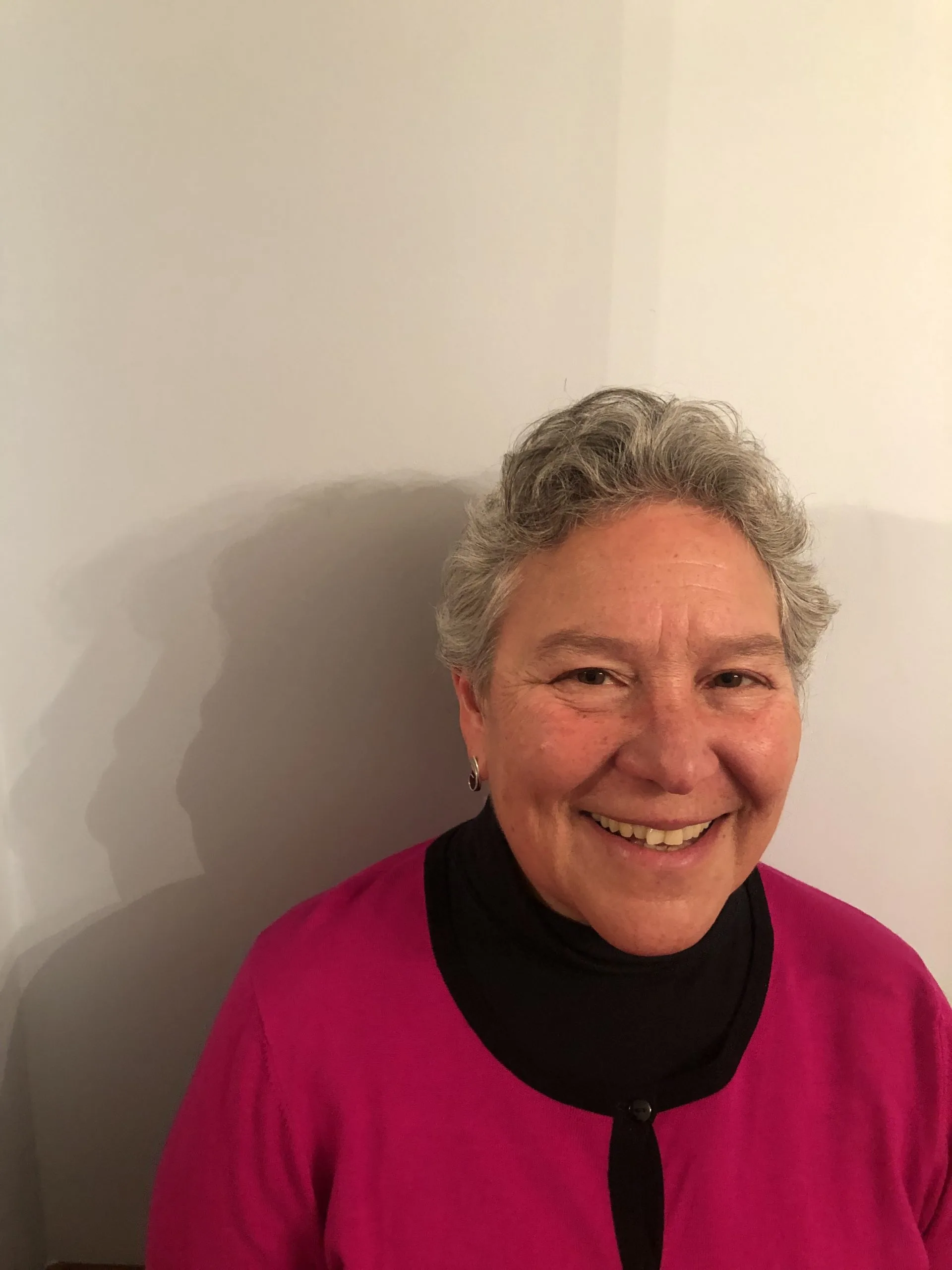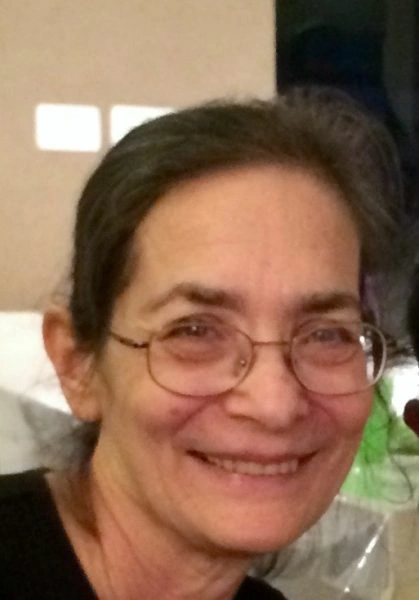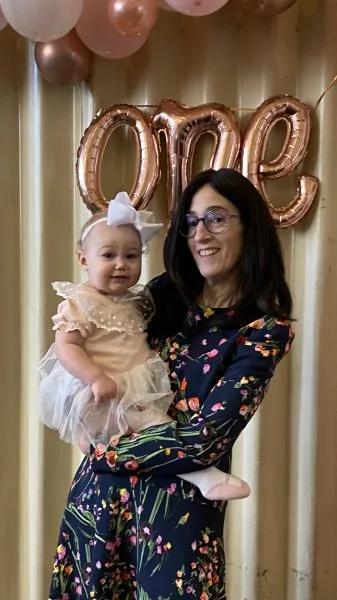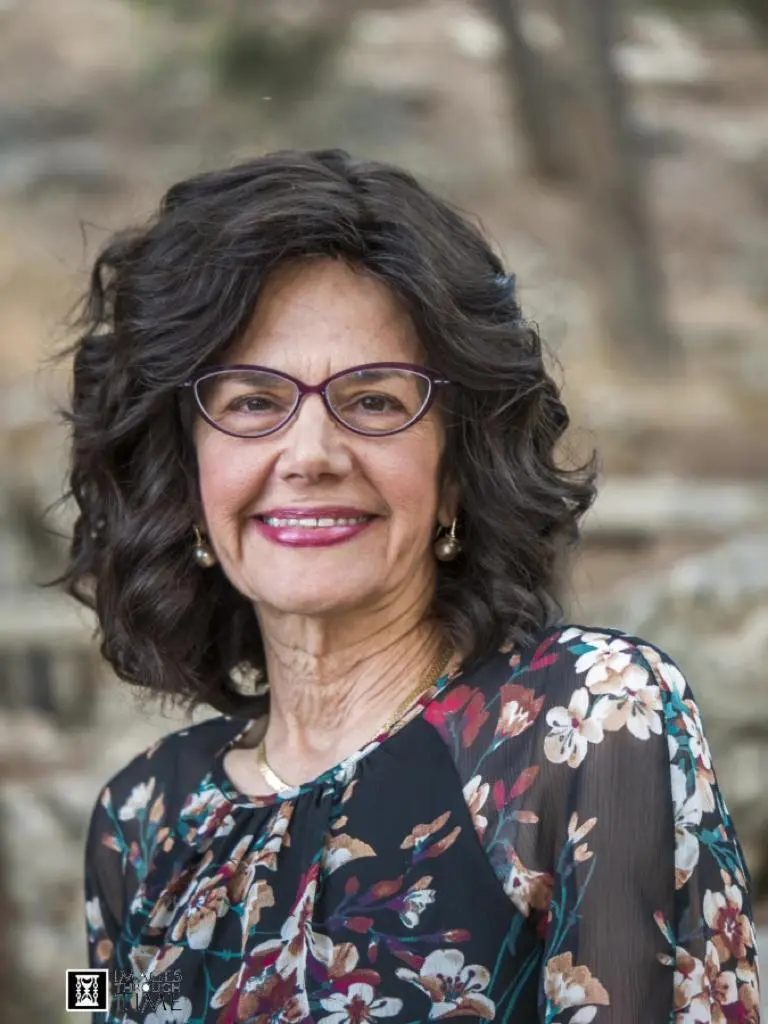Sukkah 37
לֹא מָצָא אַרְבַּעַת מִינִין יְהֵא יוֹשֵׁב וּבָטֵל, וְהַתּוֹרָה אָמְרָה: ״בַּסּוּכּוֹת תֵּשְׁבוּ שִׁבְעַת יָמִים״ — סוּכָּה שֶׁל כׇּל דָּבָר. וְכֵן בְּעֶזְרָא אוֹמֵר: ״צְאוּ הָהָר וְהָבִיאוּ עֲלֵי זַיִת וַעֲלֵי עֵץ שֶׁמֶן וַעֲלֵי הֲדַס וַעֲלֵי תְמָרִים וַעֲלֵי עֵץ עָבוֹת (וַעֲשׂוּ) סוּכּוֹת כַּכָּתוּב״!
According to your reasoning, if one did not find any of the four species to roof his sukka, he will sit idly and fail to fulfill the mitzva of sukka; and the Torah states: “You shall reside in sukkot for seven days” (Leviticus 23:42), meaning a sukka of any material. Likewise, in the book of Ezra, which can refer also to the book of Nehemiah, it says: “Go forth unto the mount, and fetch olive branches, and pine branches, and myrtle branches, and palm branches, and branches of a dense-leaved tree, to make sukkot, as it is written” (Nehemiah 8:15). Apparently, a sukka may be constructed even with materials other than the four species.
וְרַבִּי יְהוּדָה סָבַר: הָנֵי — לִדְפָנוֹת, עֲלֵי הֲדַס וַעֲלֵי תְמָרִים וַעֲלֵי עֵץ עָבוֹת — לִסְכָךְ. וּתְנַן: מְסַכְּכִין בִּנְסָרִין, דִּבְרֵי רַבִּי יְהוּדָה. אַלְמָא סִיב וְעִיקָּרָא דְּדִיקְלָא מִינָא דְלוּלַבָּא הוּא, שְׁמַע מִינַּהּ.
And Rabbi Yehuda holds: These olive branches and pine branches mentioned in the verse were for the walls of the sukka, which need not be built from the four species. Myrtle branches, palm branches, and branches of a dense-leaved tree, i.e., again myrtle, all of which are among the four species, were for the roofing. Rabbi Yehuda holds that one may roof the sukka only with the four species. And we learned in a mishna: One may roof the sukka with boards; this is the statement of Rabbi Yehuda. As boards can be produced from one of the four species only if the trunk of the date palm is considered a lulav, apparently, fibers and the trunk of the date palm are the species of the lulav. The Gemara determines: Indeed, conclude from it that this is so.
וּמִי אָמַר רַבִּי יְהוּדָה אַרְבַּעַת מִינִין — אִין, מִידֵּי אַחֲרִינָא — לָא? וְהָתַנְיָא: סִיכְּכָהּ בִּנְסָרִים שֶׁל אֶרֶז שֶׁיֵּשׁ בָּהֶן אַרְבָּעָה טְפָחִים — דִּבְרֵי הַכֹּל פְּסוּלָה. אֵין בָּהֶן אַרְבָּעָה טְפָחִים — רַבִּי מֵאִיר פּוֹסֵל, וְרַבִּי יְהוּדָה מַכְשִׁיר. וּמוֹדֶה רַבִּי מֵאִיר שֶׁאִם יֵשׁ בֵּין נֶסֶר לְנֶסֶר כִּמְלֹא נֶסֶר — שֶׁמַּנִּיחַ פְּסָל בֵּינֵיהֶן, וּכְשֵׁירָה!
The Gemara wonders: And did Rabbi Yehuda say with regard to the materials fit for roofing a sukka that the four species, yes, they are fit, but other materials, no, they are not fit? But isn’t it taught in a baraita: If one roofed the sukka with cedar [erez] boards that have four handbreadths in their width, everyone agrees that it is unfit. If they do not have four handbreadths in their width, Rabbi Meir deems it unfit and Rabbi Yehuda deems it fit. And Rabbi Meir concedes that if there is between one board and another board a gap the complete width of a board, then one places fit roofing from the waste of the threshing floor and the winepress between the boards and the sukka is fit. Apparently, Rabbi Yehuda permits one to roof the sukka with cedar wood, which is not one of the four species.
מַאי ״אֶרֶז״ — הֲדַס, כִּדְרַבָּה בַּר רַב הוּנָא. דְּאָמַר רַבָּה בַּר רַב הוּנָא, אָמְרִי בֵּי רַב: עֲשָׂרָה מִינֵי אֲרָזִים הֵן, שֶׁנֶּאֱמַר: ״אֶתֵּן בַּמִּדְבָּר אֶרֶז שִׁיטָּה וַהֲדַס וְגוֹ׳״.
The Gemara responds: What is the erez to which the mishna refers? It is in fact a myrtle tree, in accordance with that which Rabba bar Rav Huna said, as Rabba bar Rav Huna said that they say in the school of Rav: There are ten types of erez, as it is stated: “I will place in the wilderness the cedar [erez], the acacia-tree, the myrtle, and pine tree; I will set in the plain the juniper, the box-tree, and the cypress all together” (Isaiah 41:19). All the trees listed in this verse are types of cedar, and the myrtle is one of them.
רַבִּי מֵאִיר אוֹמֵר אֲפִילּוּ בִּמְשִׁיחָה כּוּ׳. תַּנְיָא אָמַר רַבִּי מֵאִיר: מַעֲשֶׂה בְּיַקִּירֵי יְרוּשָׁלַיִם שֶׁהָיוּ אוֹגְדִין אֶת לוּלְבֵיהֶן בְּגִימוֹנִיּוֹת שֶׁל זָהָב. אָמְרוּ לוֹ: מִשָּׁם רְאָיָה?! בְּמִינוֹ הָיוּ אוֹגְדִין אוֹתוֹ מִלְּמַטָּה.
§ The mishna continues: Rabbi Meir says: One may tie the lulav even with a cord. It is taught in the Tosefta that Rabbi Meir said: There was an incident involving the prominent residents of Jerusalem who would bind their lulavim with gold rings. The Sages said to him: Is there proof from there? They would bind it with its own species beneath the rings, which serve a merely decorative purpose and not a halakhic one.
אֲמַר לְהוּ רַבָּה לְהָנְהוּ מְגַדְּלֵי הוֹשַׁעְנָא דְּבֵי רֵישׁ גָּלוּתָא: כִּי גָּדְלִיתוּ הוֹשַׁעְנָא דְּבֵי רֵישׁ גָּלוּתָא, שַׁיִּירוּ בֵּיהּ בֵּית יָד — כִּי הֵיכִי דְּלָא תֶּיהְוֵי חֲצִיצָה.
Rabba said to those who would bind the four species [hoshana] of the house of the Exilarch: When you bind the four species of the house of the Exilarch, leave room for a handgrip on it where there is neither binding nor decoration so that there will not be an interposition between the lulav and the hand of the person taking it.
רָבָא אָמַר: כׇּל לְנָאוֹתוֹ — אֵינוֹ חוֹצֵץ. וְאָמַר רַבָּה: לָא לִינְקוֹט אִינִישׁ הוֹשַׁעְנָא בְּסוּדָרָא, דְּבָעֵינָא לְקִיחָה תַּמָּה וְלֵיכָּא. וְרָבָא אָמַר: לְקִיחָה עַל יְדֵי דָּבָר אַחֵר — שְׁמָהּ לְקִיחָה.
Rava said: That is unnecessary, as any addition whose purpose is to beautify does not interpose. And Rabba said: Let a person not take the four species with a cloth [sudara] around his hand, since I require a complete taking, and there is none in this case due to the interposition between his hand and the lulav. And Rava said: That is not a problem, as taking by means of another object is considered taking.
אָמַר רָבָא: מְנָא אָמֵינָא לַהּ דִּלְקִיחָה עַל יְדֵי דָּבָר אַחֵר שְׁמָהּ לְקִיחָה, דִּתְנַן: אֵזוֹב קָצָר — מְסַפְּקוֹ בְּחוּט וּבְכוּשׁ, וְטוֹבֵל וּמַעֲלֶה וְאוֹחֵז בָּאֵזוֹב וּמַזֶּה. אַמַּאי — ״וְלָקַח״ ״וְטָבַל״ אָמַר רַחֲמָנָא! אֶלָּא לָאו, שְׁמַע מִינַּהּ: לְקִיחָה עַל יְדֵי דָּבָר אַחֵר — שְׁמָהּ לְקִיחָה.
Rava said: From where do I say that taking by means of another object is considered taking? It is as we learned in a mishna: One undergoing purification from impurity imparted by a corpse must be sprinkled with purification water with the ashes of the red heifer. If the hyssop used to sprinkle the water was short and did not reach the water in the receptacle, one renders it sufficiently long by attaching a string or a spindle, and then he dips the hyssop into the water, removes it, grasps the hyssop, and sprinkles the water on the one undergoing purification. And why may he do so? Doesn’t the Merciful One say in the Torah: “And a ritually pure person shall take hyssop, and dip it in the water, and sprinkle it” (Numbers 19:18), indicating that one must take the hyssop while dipping it? Rather, may one not conclude from this that taking by means of another object is considered taking?
מִמַּאי? דִּלְמָא שָׁאנֵי הָתָם, כֵּיוָן דְּחַבְּרֵיהּ — כְּגוּפֵיהּ דָּמֵי. אֶלָּא מֵהָכָא: נָפַל מִשְּׁפוֹפֶרֶת לַשּׁוֹקֶת — פָּסוּל.
This proof is rejected: From where can that be proven? Perhaps it is different there; since he attached the string to the hyssop, its legal status is like that of the hyssop itself. However, the legal status of the cloth is not like that of the lulav, since it is not attached to the lulav. Rather, the fact that taking by means of another object is considered taking can be learned from here: If the ashes of the red heifer fell from the tube in which they were held into the trough in which the spring water was located, the water is unfit, since taking the ashes and placing them in the water must be performed intentionally.
הָא הִפִּילוֹ הוּא — כָּשֵׁר. אַמַּאי? ״וְלָקְחוּ״ ״וְנָתַן״ אָמַר רַחֲמָנָא! אֶלָּא לָאו, שְׁמַע מִינַּהּ: לְקִיחָה עַל יְדֵי דָּבָר אַחֵר — שְׁמָהּ לְקִיחָה.
By inference, if he spilled the ashes intentionally from the tube into the water, it is fit. Why? Doesn’t the Merciful One say in the Torah: “And for the impure they shall take of the ashes of the burning of the purification from sin, and he places running water upon them in a vessel” (Numbers 19:17). Apparently, one must mix the water and the ashes intentionally. Rather, may one not conclude from it that taking by means of another object is considered taking?
וְאָמַר רַבָּה: לָא לִדוּץ אִינִישׁ לוּלַבָּא בְּהוֹשַׁעְנָא, דְּדִלְמָא נָתְרִי טַרְפֵי וְהָוֵי חֲצִיצָה. וְרָבָא אָמַר: מִין בְּמִינוֹ אֵינוֹ חוֹצֵץ.
And Rabba said with regard to the lulav: After binding the myrtle branches and willow branches, let a person not insert the lulav into the binding of the four species, as perhaps as a result the leaves will fall from the branches and the leaves will constitute an interposition between the various species. And Rava said: An object of one species does not interpose before an object of the same species.
וְאָמַר רַבָּה: לָא לִיגּוֹז אִינִישׁ לוּלַבָּא בְּהוֹשַׁעְנָא, דְּמִשְׁתַּיְּירִי הוּצֵא וְהָוֵי חֲצִיצָה. וְרָבָא אָמַר: מִין בְּמִינוֹ אֵינוֹ חוֹצֵץ.
And Rabba said: Let a person not cut the lulav in order to shorten it while it is in the binding of the four species, as perhaps as a result leaves will become detached and will constitute an interposition between the various species. And Rava said: An object of one species does not interpose before an object of the same species.
וְאָמַר רַבָּה: הֲדַס שֶׁל מִצְוָה — אָסוּר לְהָרִיחַ בּוֹ, אֶתְרוֹג שֶׁל מִצְוָה — מוּתָּר לְהָרִיחַ בּוֹ. מַאי טַעְמָא? הֲדַס דִּלְרֵיחָא קָאֵי, כִּי אַקְצְיֵיה — מֵרֵיחָא אַקְצְיֵיה. אֶתְרוֹג דְּלַאֲכִילָה קָאֵי כִּי אַקְצְיֵיה — מֵאֲכִילָה אַקְצְיֵיה.
§ And Rabba said: It is prohibited to smell the myrtle branch used in fulfillment of the mitzva. However, it is permitted to smell the etrog used in fulfillment of the mitzva. The Gemara asks: What is the reason for the distinction between them? The Gemara answers: With regard to a myrtle branch, which exists primarily for its fragrance, when he sets it aside exclusively for the mitzva, he sets it aside from enjoying its fragrance. With regard to an etrog, on the other hand, which exists primarily for eating, when he sets it aside exclusively for the mitzva, he sets it aside from eating. However, he never intended to prohibit this ancillary pleasure.
וְאָמַר רַבָּה: הֲדַס בִּמְחוּבָּר — מוּתָּר לְהָרִיחַ בּוֹ, אֶתְרוֹג בִּמְחוּבָּר — אָסוּר לְהָרִיחַ בּוֹ. מַאי טַעְמָא? הֲדַס דִּלְהָרִיחַ קָאֵי, אִי שָׁרֵית לֵיהּ — לָא אָתֵי לְמִגְזְיֵיהּ. אֶתְרוֹג, דְּלַאֲכִילָה קָאֵי, אִי שָׁרֵית לֵיהּ — אָתֵי לְמִגְזְיֵיהּ.
And Rabba said: With regard to a myrtle branch, while it is attached to the tree, it is permitted to smell it on Shabbat. With regard to an etrog, while it is attached to the tree, it is prohibited to smell it. The Gemara explains: What is the reason for the difference between them? With regard to a myrtle branch, which exists primarily to smell it, if you permit him to smell it, he will not come to cut it. Once he has smelled it, he has no further use for it. With regard to an etrog, which exists primarily for eating, one may not smell it because if you permit him to do so, the concern is that he will come to cut it from the tree to eat it.
וְאָמַר רַבָּה: לוּלָב — בְּיָמִין, וְאֶתְרוֹג — בִּשְׂמֹאל. מַאי טַעְמָא? הָנֵי תְּלָתָא מִצְוֹת, וְהַאי חֲדָא מִצְוָה. אֲמַר לֵיהּ רַבִּי יִרְמְיָה לְרַבִּי זְרִיקָא: מַאי טַעַם לָא מְבָרְכִינַן אֶלָּא ״עַל נְטִילַת לוּלָב״ — הוֹאִיל וְגָבוֹהַּ מִכּוּלָּן. וְלַגְבְּהֵיהּ לְאֶתְרוֹג וּלְבָרֵיךְ! אֲמַר לֵיהּ: הוֹאִיל וּבְמִינוֹ גָּבוֹהַּ מִכּוּלָּן.
§ And Rabba said: One takes the lulav bound with the other two species in the right hand and the etrog in the left. The Gemara explains: What is the reason for that arrangement? These species constitute three mitzvot, and this etrog is only one mitzva. One accords deference to the greater number of mitzvot by taking the three species in the right hand. Rabbi Yirmeya said to Rabbi Zerika: What is the reason that we recite the blessing only with the formula: About taking the lulav, with no mention of the other species? Rabbi Zerika said to him: Since it is highest of them all and the most conspicuous, the other species are subsumed under it. Rabbi Yirmeya asks: And if that is the only reason, let him lift the etrog higher than the lulav and recite the blessing mentioning it. Rabbi Zerika said to him that he meant: Since the tree of its species is the tallest of them all, it is the most prominent, and therefore it is appropriate for the formula of the blessing to emphasize the lulav.
מַתְנִי׳ וְהֵיכָן הָיוּ מְנַעַנְעִין? בְּ״הוֹדוּ לַה׳״ תְּחִילָּה וָסוֹף, וּבְ״אָנָּא ה׳ הוֹשִׁיעָה נָּא״ — דִּבְרֵי בֵּית הִלֵּל. וּבֵית שַׁמַּאי אוֹמְרִין: אַף בְּ״אָנָּא ה׳ הַצְלִיחָה נָּא״. אָמַר רַבִּי עֲקִיבָא: צוֹפֶה הָיִיתִי בְּרַבָּן גַּמְלִיאֵל וְרַבִּי יְהוֹשֻׁעַ, שֶׁכׇּל הָעָם הָיוּ מְנַעְנְעִין אֶת לוּלְבֵיהֶן, וְהֵם לֹא נַעְנָעוֹ אֶלָּא בְּ״אָנָּא ה׳ הוֹשִׁיעָה נָּא״.
MISHNA: And where in the recitation of hallel would they wave the lulav? They would do so at the verse: “Thank the Lord, for He is good” (Psalms 118:1, 29) that appears at both the beginning and the end of the psalm, and at the verse: “Lord, please save us” (Psalms 118:25); this is the statement of Beit Hillel. And Beit Shammai say: They would wave the lulav even at the verse: “Lord, please grant us success” (Psalms 118:25). Rabbi Akiva said: I was observing Rabban Gamliel and Rabbi Yehoshua and saw that all the people were waving their lulavim, and the two of them waved their lulav only at: “Lord, please save us,” indicating that this is the halakha.
גְּמָ׳ נִעְנוּעַ מַאן דְּכַר שְׁמֵיהּ? הָתָם קָאֵי: כׇּל לוּלָב שֶׁיֵּשׁ בּוֹ שְׁלֹשָׁה טְפָחִים כְּדֵי לְנַעְנֵעַ בּוֹ — כָּשֵׁר, וְקָאָמַר: הֵיכָן מְנַעְנְעִין.
GEMARA: The Gemara asks about the premise of the mishna. With regard to waving, who mentioned it? As no previous mention was made of waving the lulav, it is a non sequitur when the tanna begins discussion of the details of the custom. The Gemara answers: The tanna is basing himself on the mishna there (29b), which states: Any lulav that has three handbreadths in length, sufficient to enable one to wave with it, is fit for use in fulfilling the mitzva. As the custom of waving the lulav was already established there, here the tanna is saying: Where would they wave the lulav?
תְּנַן הָתָם: שְׁתֵּי הַלֶּחֶם וּשְׁנֵי כִּבְשֵׂי עֲצֶרֶת כֵּיצַד הוּא עוֹשֶׂה? מַנִּיחַ שְׁתֵּי הַלֶּחֶם עַל גַּבֵּי שְׁנֵי הַכְּבָשִׂין, וּמַנִּיחַ יָדוֹ תַּחְתֵּיהֶן, וּמֵנִיף וּמוֹלִיךְ וּמֵבִיא, מַעֲלֶה וּמוֹרִיד. שֶׁנֶּאֱמַר: ״אֲשֶׁר הוּנַף וַאֲשֶׁר הוּרָם״.
We learned in a mishna there (Menaḥot 61a): With regard to the two loaves and the two lambs offered on the festival of Shavuot, how does he perform their waving before the altar? He places the two loaves atop the two lambs, and places his hand beneath them, and waves to and fro to each side, and he raises and lowers them, as it is stated: “Which is waved and which is lifted” (Exodus 29:27), indicating that there is waving to the sides as well as raising and lowering.
אָמַר רַבִּי יוֹחָנָן: מוֹלִיךְ וּמֵבִיא לְמִי שֶׁהָאַרְבַּע רוּחוֹת שֶׁלּוֹ, מַעֲלֶה וּמוֹרִיד לְמִי שֶׁהַשָּׁמַיִם וְהָאָרֶץ שֶׁלּוֹ. בְּמַעְרְבָא מַתְנוּ הָכִי: אָמַר רַבִּי חָמָא בַּר עוּקְבָא אָמַר רַבִּי יוֹסֵי בְּרַבִּי חֲנִינָא: מוֹלִיךְ וּמֵבִיא כְּדֵי לַעֲצוֹר רוּחוֹת רָעוֹת, מַעֲלֶה וּמוֹרִיד כְּדֵי לַעֲצוֹר טְלָלִים רָעִים. אָמַר רַבִּי יוֹסֵי בַּר אָבִין וְאִיתֵּימָא רַבִּי יוֹסֵי בַּר זְבִידָא: זֹאת אוֹמֶרֶת
Rabbi Yoḥanan said: He moves them to and fro to dedicate them to He Whom the four directions are His. He raises and lowers them to He Whom the heavens and earth are His. In the West, Eretz Yisrael, they taught it as follows. Rabbi Ḥama bar Ukva said that Rabbi Yosei, son of Rabbi Ḥanina, said: He moves them to and fro in order to request a halt to harmful winds, storms and tempests that come from all directions; he raises and lowers them in order to halt harmful dews and rains that come from above. Rabbi Yosei bar Avin said, and some say that it was Rabbi Yosei bar Zevila who said: That is to say,






















